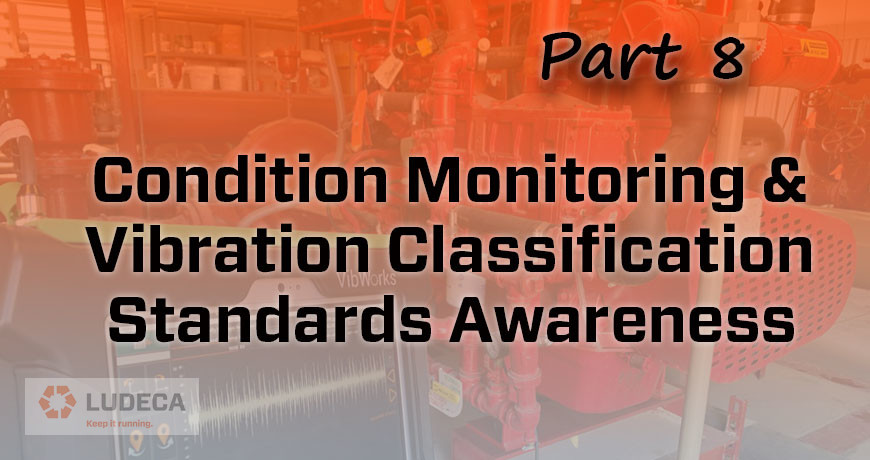
Disclaimer: The author is not trying to present himself as an authority on all available CM standards. This blog post is simply an attempt to help those who may be unaware that such guidance exists or of the extent of such standards.
We previously discussed a series of international standards pertaining to condition monitoring of industrial equipment with vibration analysis in, Condition Monitoring & Vibration Classification Standards Awareness: Part 7 ISO 20816-8:2018. This is number 8 in a series of blogs describing some international standards as a help to our Ludeca partners. This blog is about what we believe to be the newest addition to the xx816 standard family.
The standard described in this blog concerns itself with collecting and classifying the vibration of gear units sized from about 13HP to 134,000HP. The ISO 20816-9 standard is formatted with the evaluation zones of A to D, just as the other 10816 & 20816 standards. It also provides acceptance testing guidance. Like most of the other standards in the general xx816 family, “-9” provides guidance for general condition assessment, but does not attempt to guide the user through mode determination or supplant narrow band analysis.
This is the first edition of a “-9” or gearset-focused standard in the xx816 family, but it is a technical revision of the ISO 8579-2:1993 standard. ISO 8579-2:1993 was withdrawn in 2016.
This standard is titled:
ISO 20816-9:2020
Mechanical vibration — Measurement and evaluation of machine vibration
Part 9: Gear units
The scope of this standard is quoted below from the ISO.org preview page (quotation in bold):
Scope:
This document specifies requirements for determining and classifying mechanical vibration of individually housed, enclosed, speed increasing or speed reducing gear units. It specifies methods for measuring housing and shaft vibrations, and the types of instrumentation, measurement methods, and testing procedures for determining vibration magnitudes. Vibration grades for acceptance are included.
Torsional vibration measurements are outside the scope of this document.
It applies to a gear unit operating within its design speed, load, temperature range and lubrication for acceptance testing at the manufacturer’s facility. By agreement between manufacturer and customer and/or operator, it can be used for guidelines for on-site acceptance testing and for routine operational measurements.
This document applies to gear units of nominal power rating from 10 kW to 100 MW and nominal rotational speeds between 30 r/min and 12 000 r/min (0,5 Hz to 200 Hz).
This document does not apply to special or auxiliary drive trains, such as integrated gear-driven compressors, pumps, turbines, etc., or gear type clutches used on combined-cycle turbo generators and power take-off gears.
The evaluation criteria provided in this document can be applied to the vibration of the main input and output bearings of the gearbox and to the vibration of internal shaft bearings. They can have limited application to the evaluation of the condition of those gears. Specialist techniques for evaluating the condition of gears are outside the scope of this document.
This document establishes provisions under normal steady-state operating conditions for evaluating the severity of the following in-situ broad-band vibration:
- structural vibration at all main bearing housings or pedestals measured radially (i.e. transverse) to the shaft axis;
- structural vibration at the thrust bearing housings measured in the axial direction;
- vibration of rotating shafts radially (i.e. transverse) to the shaft axis at, or close to, the main bearings;
- structural vibration on the gear casing.
NOTE Vibration occurring during non-steady-state conditions (when transient changes are taking place), including run up or run down, initial loading, and load changes are outside the scope of this document.
To read the ISO’s preview of this standard, click here.
Filed under:
Condition Monitoring by Mike Fitch CRL
